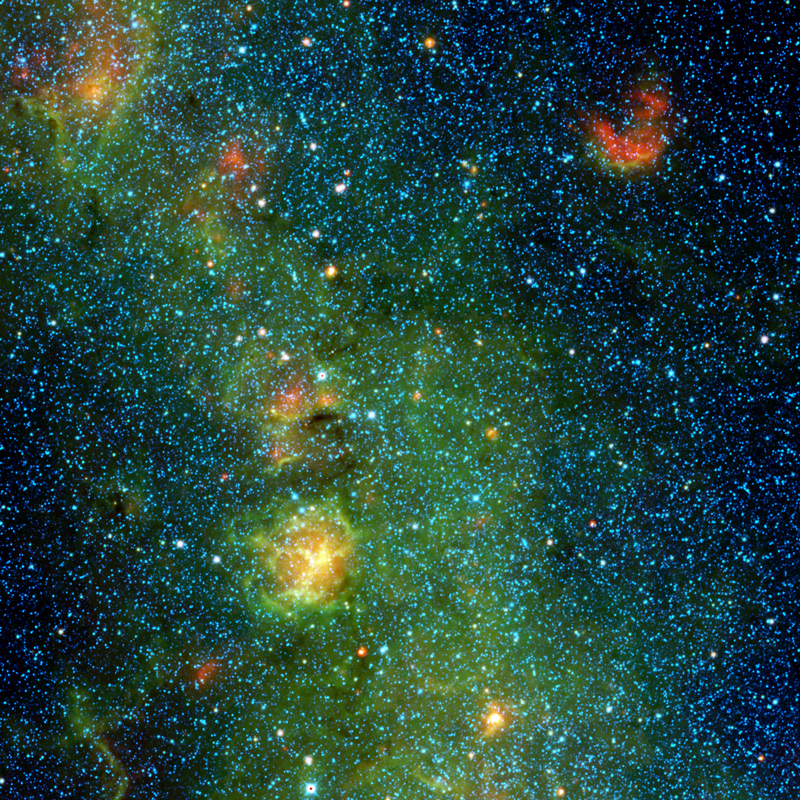



|
Jan 30, 2104 - Where the Wild Stars Are A storm of stars is brewing in the Trifid nebula, as seen in this view from NASA's Wide-field Infrared Survey Explorer, or WISE. The stellar nursery, where baby stars are bursting into being, is the yellow-and-orange object dominating the picture. Yellow bars in the nebula appear to cut a cavity into three sections, hence the name Trifid nebula. Colors in this image represent different wavelengths of infrared light detected by WISE. The main green cloud is made up of hydrogen gas. Within this cloud is the Trifid nebula, where radiation and winds from massive stars have blown a cavity into the surrounding dust and gas, and presumably triggered the birth of new generations of stars. Dust glows in infrared light, so the three lines that make up the Trifid, while appearing dark in visible-light views, are bright when seen by WISE. The blue stars scattered around the picture are older, and they lie between Earth and the Trifid nebula. The baby stars in the Trifid will eventually look similar to those foreground stars. The red cloud at upper right is gas heated by a group of very young stars. The Trifid nebula is located 5,400 light-years away in the constellation Sagittarius. Blue represents light emitted at 3.4-micron wavelengths, and cyan (blue-green) represents 4.6 microns, both of which come mainly from hot stars. Relatively cooler objects, such as the dust of the nebula, appear green and red. Green represents 12-micron light and red, 22-micron light.Image Credit: NASA/JPL-Caltech/WISE Team |
|||||||||||||||||||
|
||||||||||||||||||||
|
||||||||||||||||||||
|
|||
